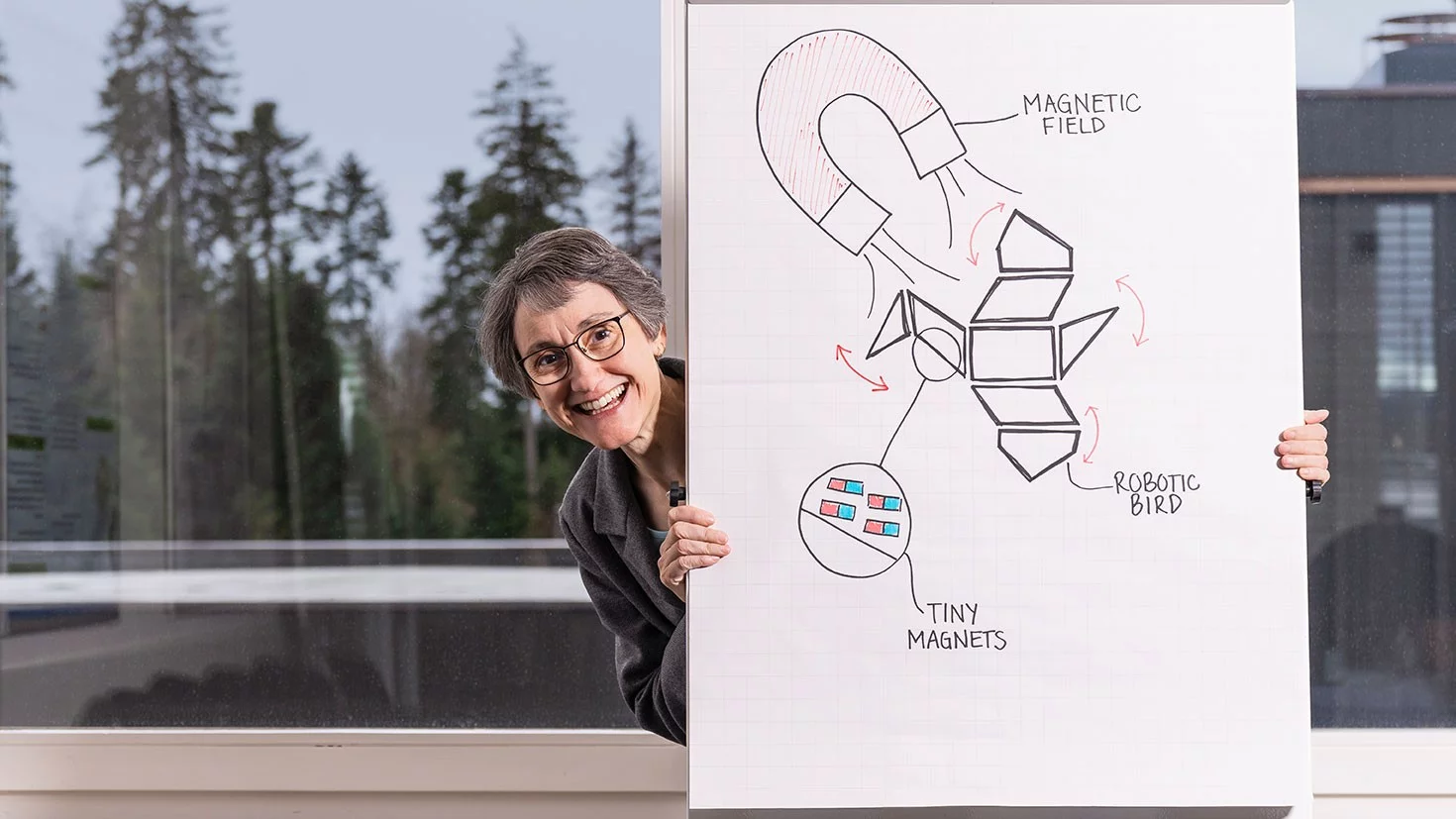How do you build a microrobot that can be controlled magnetically?
How does someone come to be head of a research group at PSI and simultaneously a professor at ETH Zurich? At the end of her school career, Laura Heyderman followed her parents’ advice to broaden her studies to improve her future job prospects. She had always enjoyed chemistry and physics, so she decided to combine them. There were only a few universities in the UK that offered a bachelor degree in chemical physics. One of them was the University of Bristol, where she began her studies in 1985. She was actually aiming to work in industry, and to combine this with travel. But one of her lecturers at the university suggested a doctoral position in France, which she took up in 1988: As a doctoral student of the University of Bristol, she carried out research on magnetic thin films at the National Centre for Scientific Research (CNRS) in Paris.
Laura Heyderman then decided that she wanted to live in Switzerland with her future husband, who is Swiss, so she came to PSI as a postdoc in 1999. In 2008, she became head of a research group now known as Mesoscopic Systems. For Heyderman, mesoscopic refers to magnets that are extremely small measuring between dozens of nanometres and several micrometres. For example, with her team and other researchers at ETH Zurich, she has developed intelligent micromachines such as the robotic bird shown in the drawing next to her. These miniature machines can carry out a variety of actions. The researchers first magnetically program nanomagnets in components of the microrobot; this then enables them to control the various movements with magnetic fields. Such machines, just a few tens of micrometres in size, might be used in medicine in the future, for example to carry out small operations inside the human body.
In 2013, she took over the professorship for Mesoscopic Systems in the Department of Materials at ETH Zurich. And last year, for her decades of scientific work in the field of magnetism, she received a special honour: She was elected Fellow of the renowned Royal Society, the UK’s national academy of sciences.
Here in Switzerland, Laura Heyderman feels very much at home. In her free time, she enjoys getting out into the countryside, cycling or hiking. With work, however, there’s not much free time available.
A few years ago, she had a long bout of ill health, and it was thanks to a successful medical treatment that she was able to pull through this difficult time. Also important during this period were her caring husband and family, as well as the support of friends and colleagues. From this experience she learned that, in times like this, you need a lot of courage, you should be patient with yourself, and that there’s always something positive to reach for.
Today she’s glad that she and her research group are running at full speed again, and that she is able to engage intensively with her research across the breadth of her interests.
More articles on this topic
Soldering on a big stage
Whoever makes it onto the podium here is one of the world's best professional talents: PSI electronics engineer Melvin Deubelbeiss won the silver medal at WorldSkills 2024.
Master of the flow
Even as a student, Athanasios Mokos was excited by the dynamics of fluids. Today at the Paul Scherrer Institute PSI, he models complex processes such as the formation of deposits on reactor fuel rods.
Cristina Müller
Developing and redesigning radiopharmaceuticals for tumour therapies





